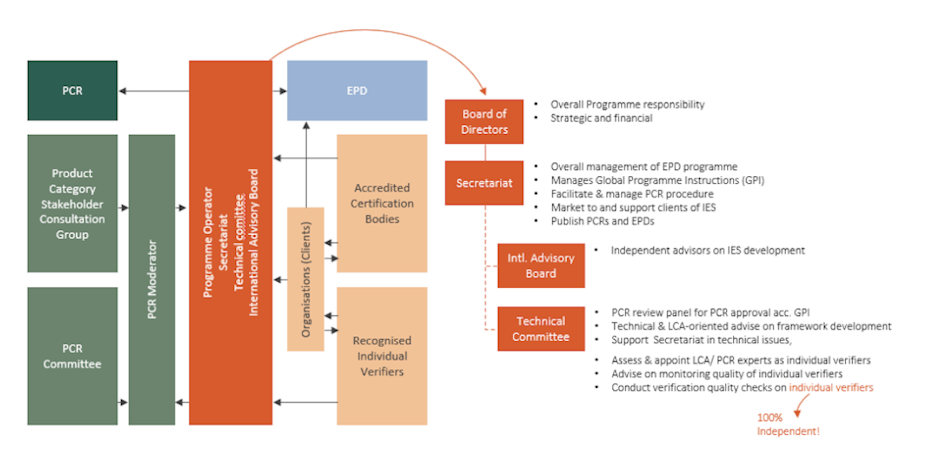International EPD System

IES as a Global Programme Operator
The International EPD System (IES) is a globally recognised programme for Environmental Product Declarations (EPDs), providing a standardised and transparent framework aligned with ISO 14025 and EN 15804. Through third-party verified life cycle data, IES supports informed, sustainability-driven decisions by both businesses and consumers.
Central to its mission, IES empowers organisations worldwide to publish third-party verified and comparable environmental data, promoting life cycle transparency and encouraging actions more beneficial to the environment. With coverage across a wide array of product categories, IES plays a pivotal role in harmonising and digitalising EPDs, making environmental performance data more accessible, comparable, and actionable. As of mid 2025, more than 18,000 EPDs have been published by companies in nearly 50 countries.
IES services are available to both private and public sector organisations globally through its wide network of licensees. The network of independent licensees provides localised support, and facilitates the development of EPDs in local markets in key regions including North America, Latin America, South Asia, Southeast Asia, and the MENA region. As of 15 September 2025, over 2700 organisations from nearly 50 countries maintain valid EPDs within the IES programme.
IES is operated by EPD International AB, a wholly owned subsidiary of IVL Swedish Environmental Research Institute. Established in 1998, IES is the world’s first and longest-running EPD programme, and the original developer of both the EPD concept and the Product Category Rules (PCRs) upon which EPDs are based.
EPD International AB, together with its parent company, IVL Swedish Environmental Research Institute, exclusively holds the Intellectual Property Rights (IPR) to all materials developed for and under the International EPD System. This includes, but not limited to, logotypes, General Programme Instructions (GPI), and Product Category Rules (PCRs).
IES is operated in accordance with the following global standards:
Programme Structure and Process
The International EPD System (IES) is a global programme primarily controlled and operated by EPD International AB, a registered limited company headquartered in Sweden. As such, EPD International AB adheres to Swedish legislation, including national company regulations and relevant international standards.
Responsibility for the governance, management, and technical development of the programme is distributed among the Board of Directors, the Secretariat, the Technical Committee (TC), and the International Advisory Board (IAB).
The Board of Directors holds the overall mandate for programme governance, with responsibility for strategic direction and financial oversight. The Secretariat manages the day-to-day operations of IES and ensures the effective delivery of programme services. In selected markets, certain market support and development services may be delegated to franchisees within the IES, known as collocation centres and licensees.
Supporting these core functions, the TC provides independent expert advice on technical and methodological matters, reviews and approves PCRs, as well as independent verifiers, while the IAB offers independent market-related insights and strategic recommendations to foster global uptake and relevance.
In the development of Product Category Rules (PCRs), the Secretariat retains full ownership and oversight of the entire process, from initiation through drafting, review, publication, and subsequent updates. Throughout this open stakeholder engagement process, the Secretariat cooperates with independent PCR Moderators and PCR Committees that lead the drafting and open consultation phases. EPD verifications are conducted by independent third-party verifiers, which include both approved individual verifiers and accredited certification bodies.
The diagram below illustrates the organisational structure and operational workflow of the International EPD System.
